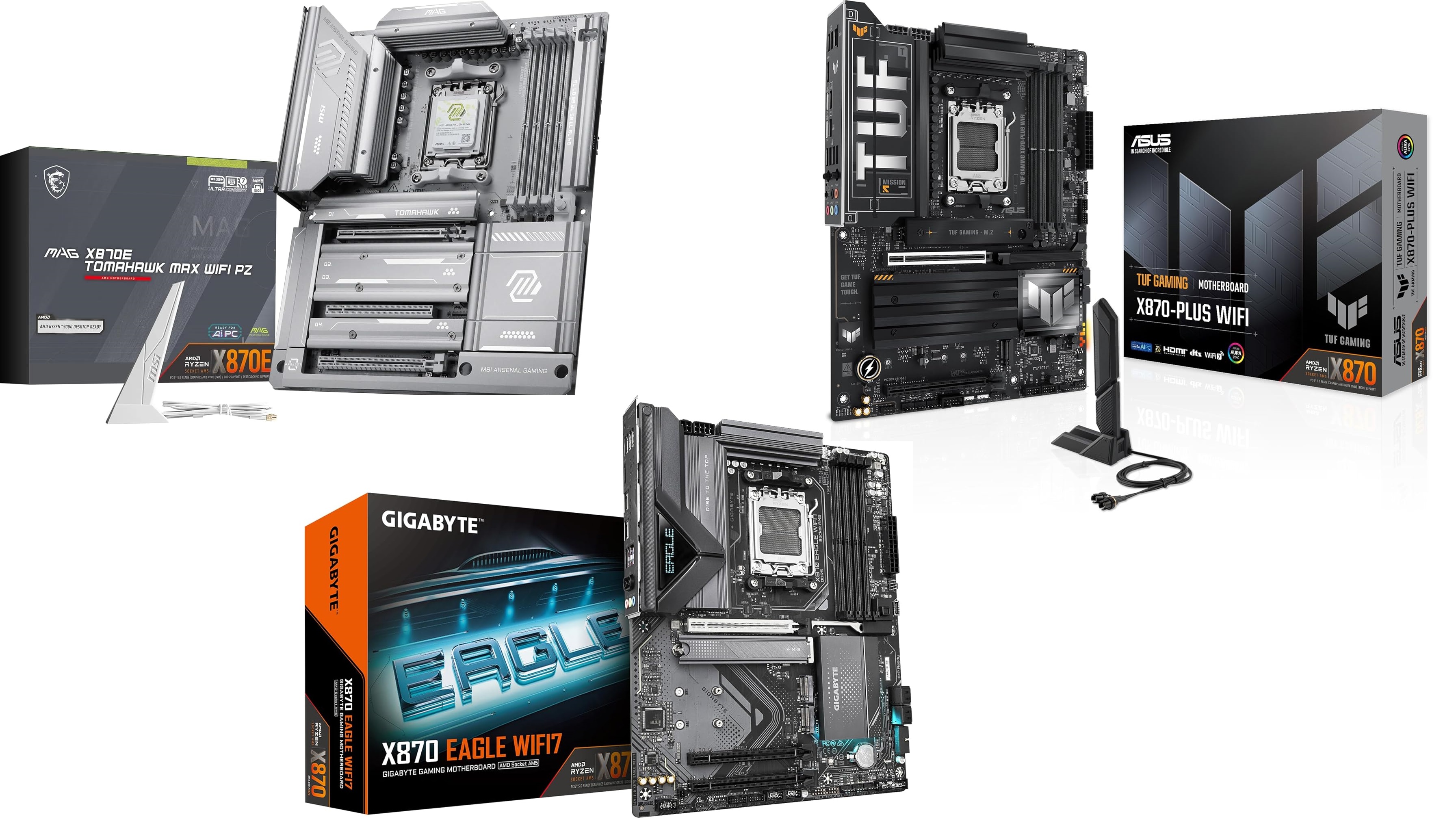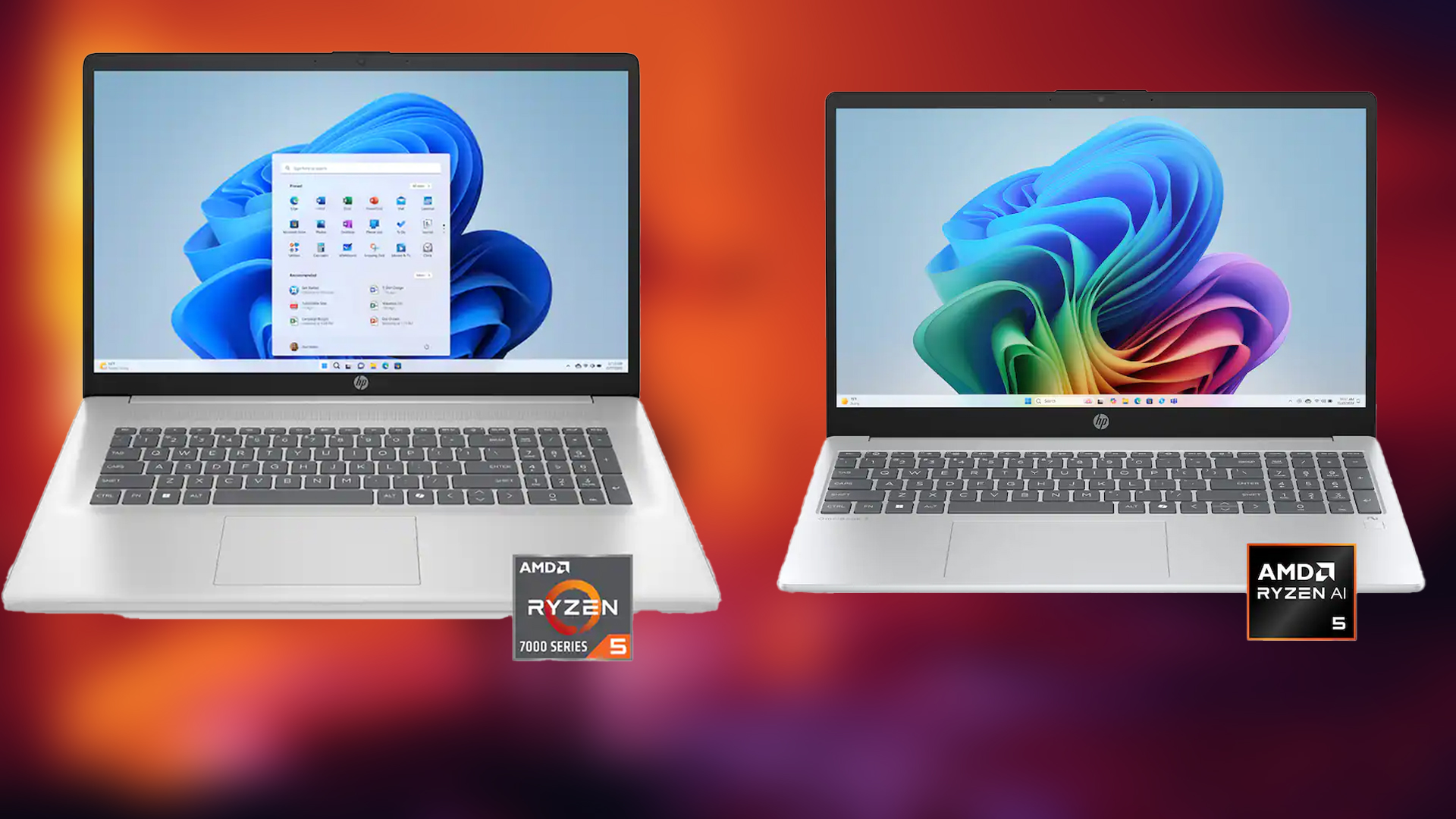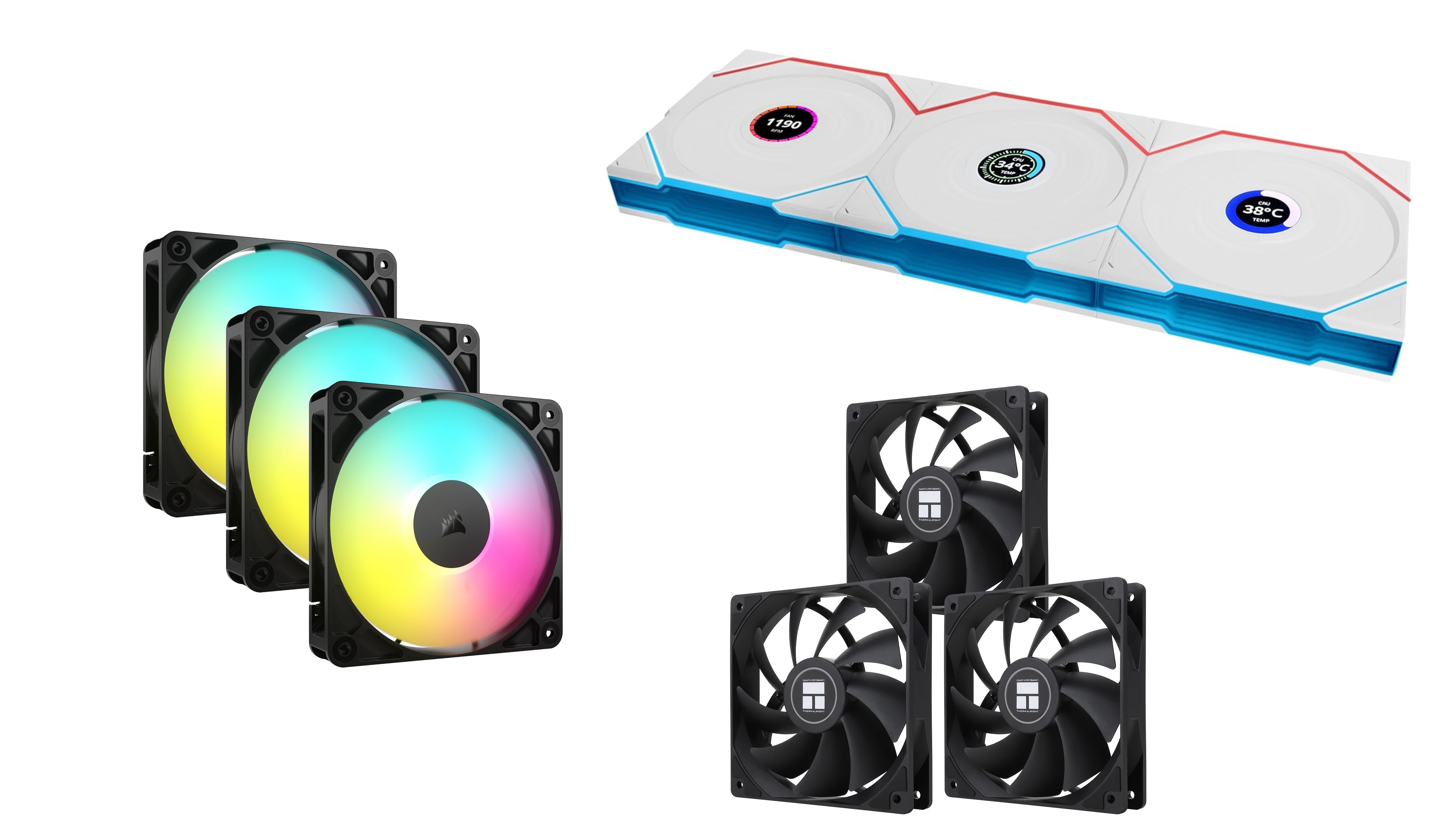NVIDIA’s Computex updates for 2025 are here. Here’s what you need to know about the RTX 5060, DLSS 4, AI tools, and more.
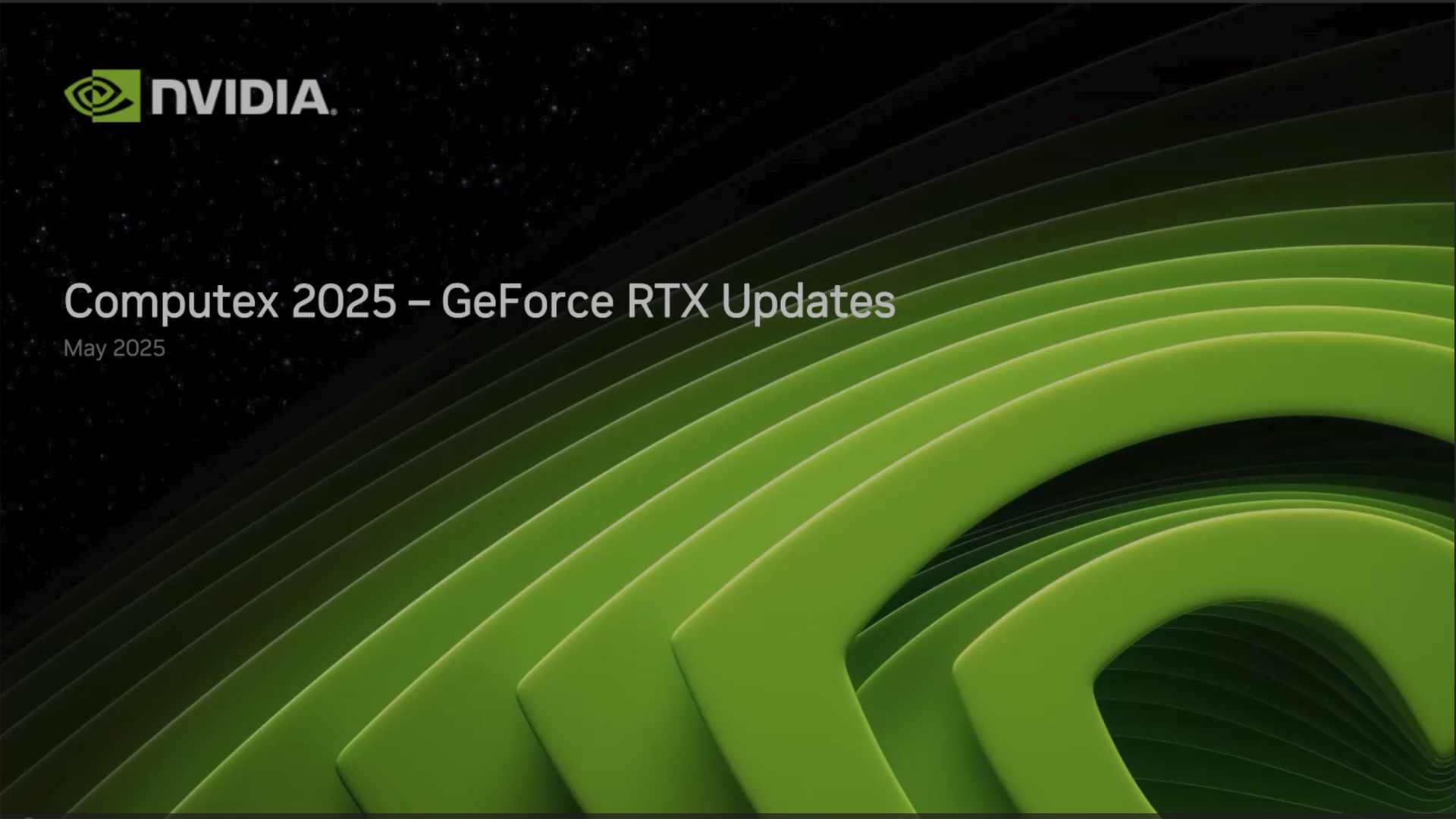
Over the years, NVIDIA has made monumental progress in AI computing, real-time ray tracing, and hardware that offers incredible performance alongside portability. During a pre-briefing session for their Computex presentation, they highlighted new gaming technologies, rendering techniques, and AI tools that leverage their hardware in laptops and desktops. Below are some of the key details revealed so far.
NVIDIA Launches the RTX 5060 in Laptop and Desktop
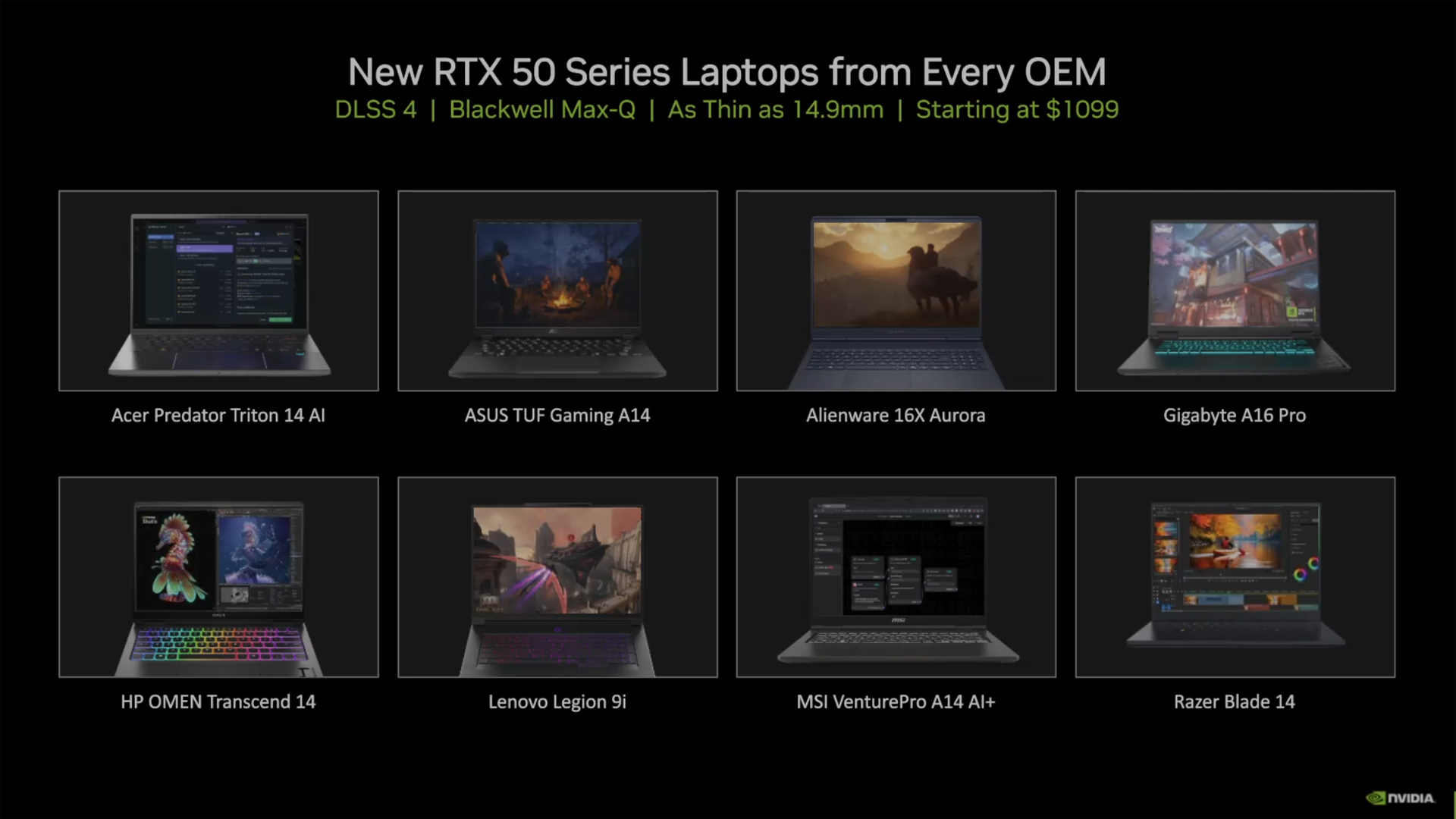
NVIDIA will launch the RTX 5060 for desktops and laptops on May 19, 2025, completing its RTX 50 series lineup built on the Blackwell architecture. The RTX Blackwell architecture, which powers the entire 50 series, boasts 92 billion transistors, delivers 4,000 AI TOPS of compute performance, and has GDDR7 memory. It’s the fastest and most advanced GPU architecture to date.
The RTX 5060 will be available for desktops at a starting MSRP of $299, and the laptop versions will start at $1099. NVIDIA has positioned the 5060 as an entry-level GPU, allowing gamers to play games with DLSS at around 100 FPS. According to Justin Walker, NVIDIA’s senior director of product management, the 5060 offers substantial upgrades for over 50 million gamers who are relying on older-generation hardware, such as Pascal.
For laptop users, the RTX 5060 will be available in various designs from major OEMs and will also include ultra-slim form factors for creators. Some of the highlighted models, such as the HP Omen Transcend 14, represent this new standard. According to NVIDIA, this launch is the company’s fastest product rollout in history.
NVIDIA Updates RTX Remix

RTX Remix is NVIDIA’s modding platform for remastering classic games with technologies such as path tracing and DLSS. Developers have released 100 RTX Remix titles so far and are actively working on over 350 projects. As per NVIDIA, 2 million gamers have downloaded RTX remix mods.
On May 18th, NVIDIA released an upgrade to Portal RTX, adding DLSS 4 and RTX Neural Radiance Cache. The company claims that Radiance Cache will provide better indirect lighting, and DLSS 4 will boost the performance by 10x.
NVIDIA also encourages the modding community. It is launching the RTX Remix modding contest that will run until Gamescom and feature over $50,000 in prizes. The contest aims to showcase talented modders who leverage NVIDIA’s technology to create impressive mods for the community.
DLSS 4 Adoption and Game Updates
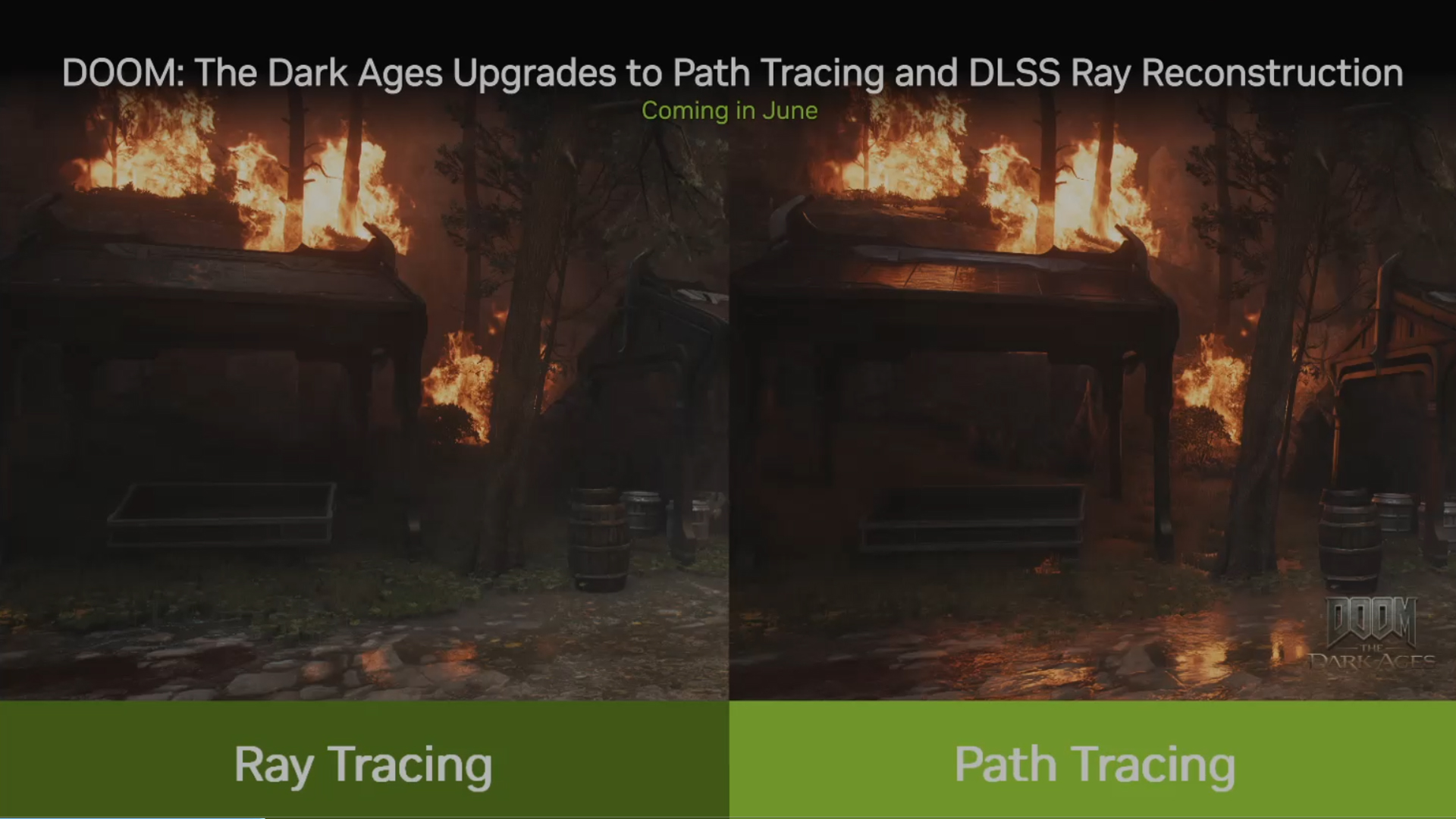
Gamers have embraced DLSS 4 and its new transformer model, making it a big hit in the gaming community. It now supports over 125 games and applications, representing the fastest adoption of any NVIDIA gaming technology, and around two years faster than DLSS 3.
At Computex, NVIDIA is announcing 10 new upcoming games that will support DLSS 4, and some of the titles are:
- Crimson Desert
- F1-25
- FPC Firebreak
- Wu-Tang: Fallen Feathers
NVIDIA also highlighted its partnership with Bethesda and ID Software on Doom: The Dark Ages. The game presently features ray-traced reflections, global illumination, DLSS4 with multi-frame generation, and NVIDIA Reflex to mitigate latency. The company has also announced that in June, Doom: The Dark Ages will add Path-tracing, enhancing the game’s dark, angsty, and gloomy atmosphere. With DLSS 4 and MFG, gamers playing the game can expect incredible frame pacing and even better image quality.
AI PC Innovations
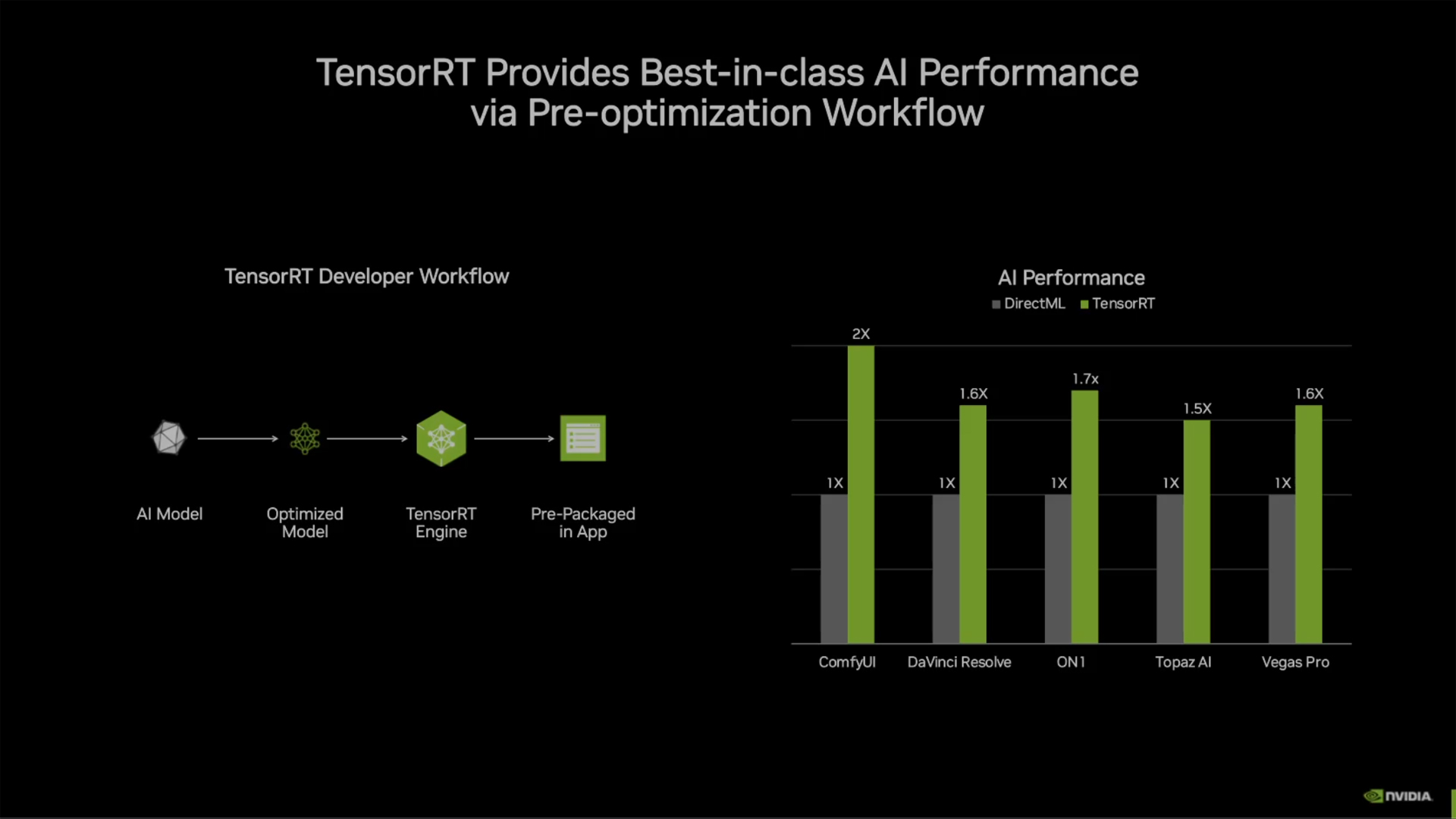
Alongside gaming and ray tracing, NVIDIA has also made incredible progress in the field of artificial intelligence. They have introduced a new version of TensorRT for RTX, designed explicitly for RTX AI PCs. This update eases things out on the developers’ end by allowing them to ship off a generic Tensor RT engine rather than pre-generating engines for individual GPUs. When you install an application or run a feature for the first time, TensorRT for RTX quickly generates an optimized engine for your specific GPU in just seconds.
The updated TensorRT has seen a massive size reduction of around 8x. As the company claims, this has made it easier to package in applications. The support goes back to the first generation of RTX, which is the Turing architecture. NVIDIA will make TensorRT for RTX available to developers in June, and applications using it should launch soon after.
NVIDIA has also announced collaborations with several applications to accelerate their AI features. One of these is LM Studio, an incredibly popular application for running LLMs locally. It was recently updated with the latest CUDA, which resulted in a performance boost of around 30%. Topaz Video AI is being released as a Gen AI feature to enhance video quality, running locally on RT GPUs. Additionally, Bilibili, one of China’s top three live streaming platforms, is adding AI effects from NVIDIA Broadcast to enhance live stream quality.
NVIDIA NIMs and AI Blueprints

For AI enthusiasts and developers, NVIDIA highlighted its NIM packages, which are pre-packaged generative AI models optimized with TensorRT for RTX GPUs. The NIMs come with an easy-to-use API that is highly compatible with AI applications, allowing them to run on both Windows (via WSL – Windows Subsystem for Linux) and natively on Linux systems.
This month, NVIDIA is announcing a new image NIM for Fluxnell from Black Forest Labs, which is said to be faster than the current state-of-the-art Flux Dev image generator. NVIDIA is also updating the Flux Dev NIM to be compatible with more GPUs. Alongside NIMs, NVIDIA also provides AI Blueprints, which are workflow examples demonstrating how to use NIMs creatively. These projects come with easy-to-use UIs for people without a coding background and are open-sourced, so that seasoned developers can integrate them into their projects.
Project G-Assist Updates
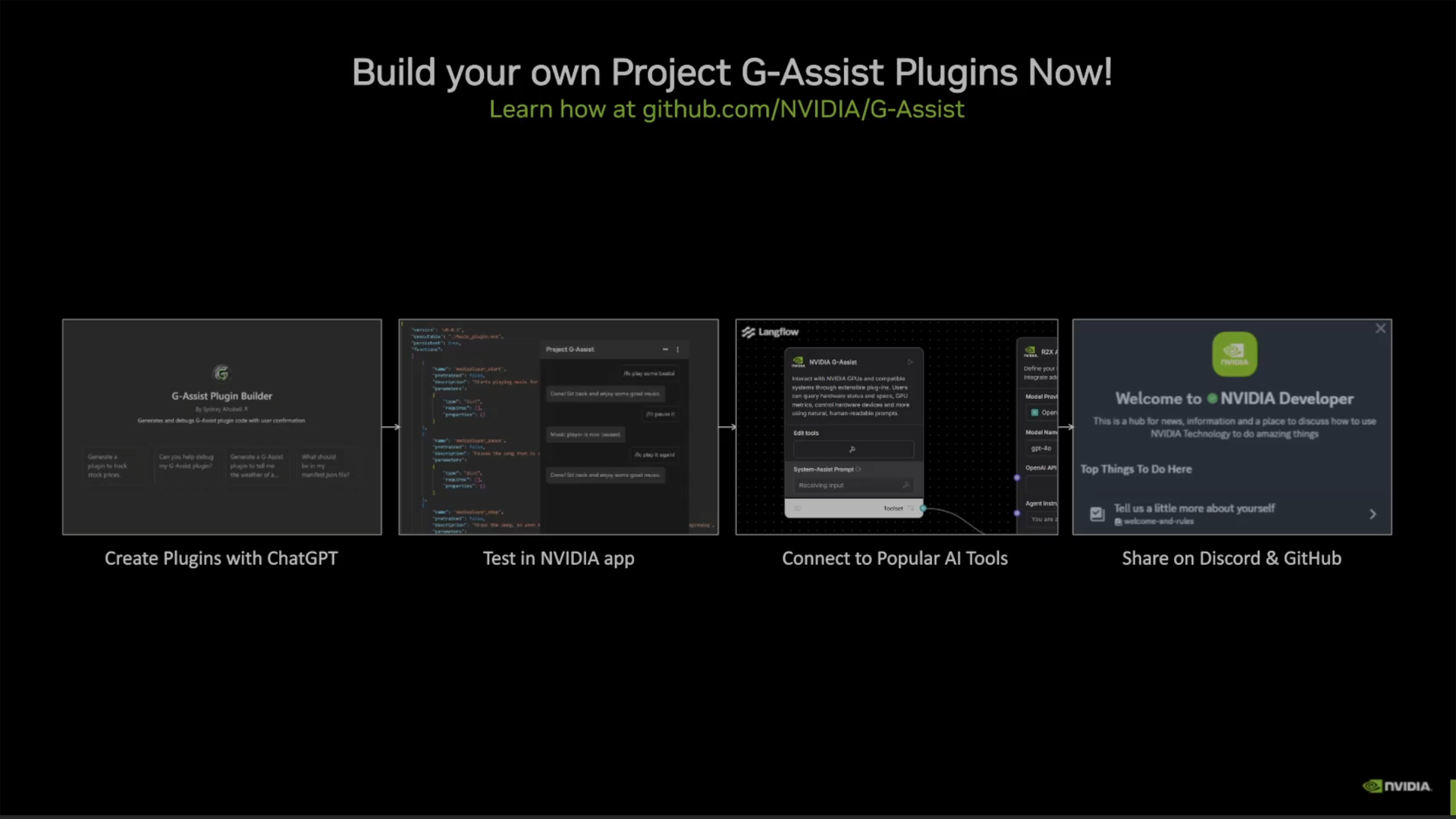
Alongside AI, RTX, and other updates, Project G-Assist also sees new updates. The company announced that new plugins built by the community will be released shortly, along with open-source samples on GitHub for anyone who wants to customize even further.
Some of the new plugins include a Gemini integration that allows users to query Google’s LLM via G-assist and perform real-time web searches. Another is a Discord plugin for sharing highlights without disrupting gameplay. The other is an IFTTT plugin for creating automations and a SignalRGB plugin for controlling lighting systems.
NVIDIA has made it easy to create/integrate these plugins using a JSON file containing their metadata and Python for logic. They have also built a no-code/low-code solution called the Plugin Builder that uses ChatGPT and follows user textual prompts to create plugins.
Conclusion
To summarize, NVIDIA is wrapping up its 50 series lineup with the RTX 5060 in laptops and desktops, and its Computex keynotes focus on pushing DLSS 4 to more titles and bringing more AI goodies to the consumer.
Looking For More Related to Tech?
We provide the latest news and “How To’s” for Tech content. Meanwhile, you can check out the following articles related to PC GPUs, CPU and GPU comparisons, mobile phones, and more:
- 5 Best Air Coolers for CPUs in 2025
- ASUS TUF Gaming F16 Release Date, Specifications, Price, and More
- iPhone 16e vs iPhone SE (3rd Gen): Which One To Buy in 2025?
- Powerbeats Pro 2 vs AirPods Pro 2: Which One To Get in 2025
- RTX 5070 Ti vs. RTX 4070 Super: Specs, Price and More Compared
- Windows 11: How To Disable Lock Screen Widgets
 Reddit
Reddit
 Email
Email
